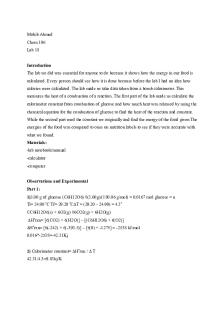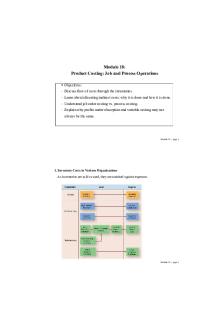Ikram 18 Arid 566 - dfggh PDF

| Title | Ikram 18 Arid 566 - dfggh |
|---|---|
| Course | Distributed Database Systems |
| Institution | Arid Agriculture University Rawalpindi |
| Pages | 5 |
| File Size | 267.2 KB |
| File Type | |
| Total Downloads | 91 |
| Total Views | 129 |
Summary
dfggh...
Description
Software Engineering BS-CS (Semester_5A) Morning Name: Muhammad Ikram-ul-haq Reg no: 18-Arid-566 Assignment no: 2
Question no 1: Explain V-model along with the diagrammatic representation. Write the advantages and disadvantages of v-model.
V-Model: V- Model means verification and validation model. Just like the waterfall model, the v-shaped life cycle is a sequential path of execution of processes. Each phase must be completed before the next phase begins. V-model is one of the many software development models. Testing of the product is planned in parallel with a corresponding phase of development in v-model.
Diagram of V-model:
The various phases of the V-model are as follows:
Requirements like BRS and SRS begin the life cycle model just like the waterfall model. But, in this model before development is started, a system test plan is created. The test plan focuses on meeting the functionality specified in the requirements gathering. The high-level design (HLD) phase focuses on system architecture and design. It provide overview of solution, platform, system, product and service/process. An integration test plan is created in this phase as well in order to test the pieces of the software systems ability to work together. The low-level design (LLD) phase is where the actual software components are designed. It defines the actual logic for each and every component of the system. Class diagram with all the methods and relation between classes comes under LLD. Component tests are created in this phase as well. The implementation phase is, again, where all coding takes place. Once coding is complete, the path of execution continues up the right side of the V where the test plans developed earlier are now put to use. Coding: This is at the bottom of the V-Shape model. Module design is converted into code by developers. Unit Testing is performed by the developers on the code written by them Advantages of V-model:
Simple and easy to use. Testing activities like planning, test designing happens well before coding. This saves a lot of time. Hence higher chance of success over the waterfall model. Proactive defect tracking – that is defects are found at early stage. Avoids the downward flow of the defects. Works well for small projects where requirements are easily understood. This is a highly disciplined model and Phases are completed one at a time. This model focuses on verification and validation activities early in the life cycle thereby enhancing the probability of building an error-free and good quality product. It enables project management to track progress accurately.
Disadvantages of V-model:
Very rigid and least flexible. Software is developed during the implementation phase, so no early prototypes of the software are produced. If any changes happen in midway, then the test documents along with requirement documents has to be updated. High risk and uncertainty. It is not a good for complex and object-oriented projects. It is not suitable for projects where requirements are not clear and contains high risk of changing. This model does not support iteration of phases. It does not easily handle concurrent events.
When to use the V-model:
The V-shaped model should be used for small to medium sized projects where requirements are clearly defined and fixed. The V-Shaped model should be chosen when ample technical resources are available with needed technical expertise.
High confidence of customer is required for choosing the V-Shaped model approach. Since, no prototypes are produced, there is a very high risk involved in meeting customer expectations.
Question no 2: What is R and D? Write the importance of R and D in software development. What is Research and Development (R&D)? R&D is, more than anything else, an investigation, with the goal of coming up with something new .A discovery that will result in a new product or service, or one that will improve or enhance an existing offering.
Importance of R&D in Software Development When you are trying to create something unique, do not underestimate research and development as many leaders do. The importance of this process is more than high. It is a whole system that precedes the production. Any good idea will not turn into something great and successful without proper research. Research and development (R&D) may last throughout the entire project and add to the development process. New software in every niche hits the market every day. It is the result of creatives with great new ideas and software engineers who can put those ideas into innovative software. Consider just the financial services industry, as an example. Banks began with software that allowed customers to access their accounts online, check their balances, schedule transfers and
pull up a daily accounting of expenditures. But they knew that, as online banking grew, consumers would demand more and more services. Enter R&D. Now, consumers can access their bank and do many of the following, because of new software that has been developed.
They can receive personalized breakdowns of categories of expenses, so they can see where their money is going and how they might modify their budgets.
They can apply online for all types of loans.
They can be provided recommendations of how they might better plan for short- and long-term savings, based upon their individual goals. Banks that stay on top of consumer wants and needs do the research on software development to meet those wants and needs, and then come up with the products that will serve those consumers. It is the same with every business niche. Those companies that invest in software R&D will gain a competitive edge; those that do not will pay the price of lost customers/clients and a second-tier position within their industries. There is no need to ask why R&D is important. It is the ticket to remaining competitive and to serving customers/clients better than that competition. It is also the ticket to getting recognition as a leader in the sector; and it is the ticket to attracting the human expertise that will move a company forward.
THE END...
Similar Free PDFs

Ikram 18 Arid 566 - dfggh
- 5 Pages

Edkp 566 outline
- 4 Pages

18 - lab 18
- 4 Pages

18 - Lecture notes 18
- 5 Pages

TEMA 18 - Apuntes 18
- 3 Pages

Chapter 18 - Lecture notes 18
- 21 Pages

Chapter 18 - Lecture notes 18
- 14 Pages

Module 18 - Lecture notes 18
- 41 Pages

Chapter 18 - Lecture notes 18
- 26 Pages

Pregunta 2 18 / 18 ptos
- 12 Pages

Tema 18. Higado - Apuntes 18
- 17 Pages

Chapter 18 - Lecture notes 18
- 13 Pages

Research 18 - Lecture notes 18
- 5 Pages
Popular Institutions
- Tinajero National High School - Annex
- Politeknik Caltex Riau
- Yokohama City University
- SGT University
- University of Al-Qadisiyah
- Divine Word College of Vigan
- Techniek College Rotterdam
- Universidade de Santiago
- Universiti Teknologi MARA Cawangan Johor Kampus Pasir Gudang
- Poltekkes Kemenkes Yogyakarta
- Baguio City National High School
- Colegio san marcos
- preparatoria uno
- Centro de Bachillerato Tecnológico Industrial y de Servicios No. 107
- Dalian Maritime University
- Quang Trung Secondary School
- Colegio Tecnológico en Informática
- Corporación Regional de Educación Superior
- Grupo CEDVA
- Dar Al Uloom University
- Centro de Estudios Preuniversitarios de la Universidad Nacional de Ingeniería
- 上智大学
- Aakash International School, Nuna Majara
- San Felipe Neri Catholic School
- Kang Chiao International School - New Taipei City
- Misamis Occidental National High School
- Institución Educativa Escuela Normal Juan Ladrilleros
- Kolehiyo ng Pantukan
- Batanes State College
- Instituto Continental
- Sekolah Menengah Kejuruan Kesehatan Kaltara (Tarakan)
- Colegio de La Inmaculada Concepcion - Cebu


